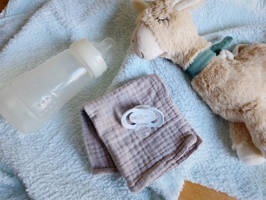Staying Safe During a Typhoon in Japan
Wednesday, August 28, 2024
Essential Precautions and Safety Tips

Japan, located in the Pacific Ring of Fire, frequently experiences natural disasters such as earthquakes, tsunamis, and typhoons. Typhoons, known as taifū (台風) in Japanese, are powerful tropical storms that often hit the country between June and October. As Typhoon No. 10 approaches, it's vital to be prepared to minimize risks and ensure safety. Here's a detailed guide on understanding typhoons in Japan, how to stay safe, and lessons from past storms like Typhoon 21 from 2018.
Understanding Typhoons in Japan
What is a Typhoon?
A typhoon is a mature tropical cyclone that develops in the western part of the North Pacific Ocean. It is characterized by strong winds, heavy rainfall, and storm surges, leading to flooding, landslides, and other severe damage to infrastructure.
Typhoon Season in Japan
Japan's typhoon season typically runs from June to October, with August and September being the peak months. During this period, Japan experiences an average of 20 to 30 typhoons each year.
Categories of Typhoons: based on wind speed:
- Tropical Depression: Winds less than 62 km/h
- Tropical Storm: Winds between 63-87 km/h
- Severe Tropical Storm: Winds between 88-117 km/h
- Typhoon: Winds between 118-156 km/h
- Strong Typhoon: Winds between 157-193 km/h
- Violent Typhoon: Winds exceeding 194 km/h
Typhoon 21 (Jebi) in 2018: A Case Study
Typhoon 21, also known as Jebi, was one of the most powerful and destructive typhoons to hit Japan in recent history. It made landfall on September 4, 2018, and caused widespread damage, particularly in the Kansai region.
Impact of Typhoon Jebi
Wind Speed: With sustained winds of 215 km/h and gusts reaching up to 250 km/h, Jebi was classified as a Violent Typhoon, the highest category in Japan's classification.
Damage: Jebi caused severe damage to buildings, infrastructure, and transportation systems. The Kansai International Airport, built on a man-made island, was particularly affected, with parts of the runway submerged and a tanker ship colliding with the airport’s bridge, severing access to the mainland.
Casualties: The typhoon resulted in the deaths of at least 14 people and injured more than 400.
Economic Impact: The total cost of damages was estimated at around ¥800 billion (approximately USD 7 billion).
Lessons Learned from Typhoon Jebi
Infrastructure Vulnerabilities: The damage to Kansai International Airport highlighted the need to reassess and reinforce infrastructure resilience, especially in coastal and low-lying areas.
Importance of Timely Evacuations: Many casualties occurred because people were caught in the storm or due to falling debris. Evacuating early and following government advisories can save lives.
Emergency Preparedness: Jebi demonstrated the importance of having a well-prepared emergency kit and a clear evacuation plan.


Precautionary Measures Before, During, and After a Typhoon
Before a Typhoon
Stay Informed: Regularly check weather updates from reliable sources such as the Japan Meteorological Agency (JMA), NHK, Weather News, or The Japan Times' designated disaster information page for updates. Pay attention to warnings and advisories and know where your nearest evacuation center is.
Prepare a typhoon emergency kit that includes:
- Bottled water (at least three days’ supply)
- Non-perishable food
- Flashlights and extra batteries
- First-aid kit
- Portable chargers for mobile devices
- Necessary medications
- Important documents in a waterproof container
Secure Your Home:
- Close and secure all windows and doors.
- Remove or secure outdoor furniture, potted plants, and other objects that could become projectiles.
- Check and clean gutters and drains to prevent blockages.
Plan Your Evacuation:
Know the location of your nearest evacuation center and the safest route to get there. Make a family emergency plan and ensure everyone knows it.
During a Typhoon
Stay Indoors: Avoid going outside unless it’s absolutely necessary. High winds and flying debris can cause serious injuries.
Stay Away from Windows: Strong winds can shatter glass, so keep a safe distance from windows. Use heavy curtains or blinds as a barrier.
Avoid Flooded Areas: Never walk or drive through flooded areas. Floodwaters can be deeper than they appear, and currents can be strong enough to sweep vehicles away.
Keep Communication Lines Open: Use your mobile phone sparingly to conserve battery life but stay connected with family, friends, or local authorities for updates.
Monitor Official Updates: Continue to listen to weather reports and follow instructions from local authorities regarding evacuation or shelter-in-place orders.
After a Typhoon
Stay Cautious: Even after the storm has passed, hazards like downed power lines, debris, and flooding may still be present. Avoid these areas until it’s safe.
Check for Damage: Inspect your home for any structural damage, such as cracked walls or roofs, and address any issues as soon as possible.
Report Injuries or Damage: Contact emergency services if you or someone else is injured, or if you spot any hazardous conditions in your area.
Stay Informed: Continue to listen to official updates, as there may be secondary hazards like landslides or additional flooding.
Help Your Community: If safe to do so, check on neighbors, especially the elderly or those with disabilities, or any community centers to see if people in your area need assistance.
Final Thoughts
Preparation is the key to staying safe during a typhoon. By understanding the risks, taking necessary precautions, and staying informed, you can protect yourself, your family, and your community. The devastating impact of Typhoon Jebi in 2018 serves as a reminder of the importance of preparedness. As Typhoon No. 10 approaches, take these steps seriously to minimize risks and ensure safety for everyone.








